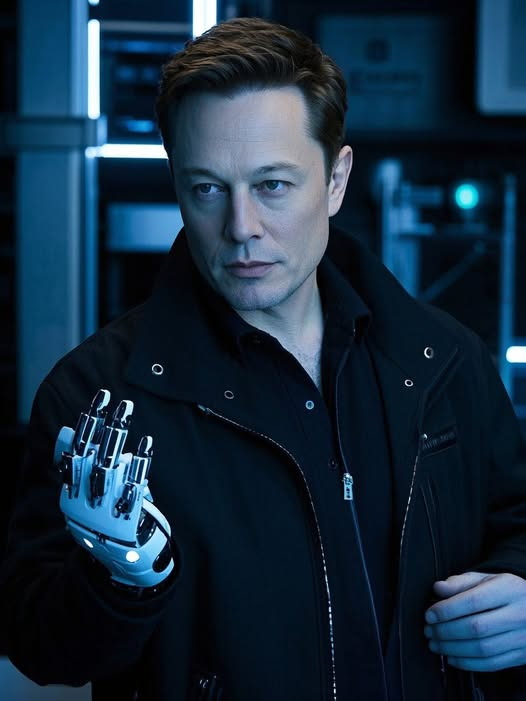
When it comes to artificial intelligence, few voices have echoed louder—or more urgently—than that of Elon Musk. The billionaire tech visionary behind Tesla, SpaceX, Neuralink, and X (formerly Twitter) has long walked the razor’s edge between admiration and anxiety when it comes to AI. For Musk, artificial intelligence isn’t just a tool—it’s a double-edged sword with the power to elevate or end humanity.
His evolving stance on AI reflects the broader societal tension: how do we reap the benefits of increasingly intelligent machines without unleashing chaos? From launching Neuralink to co-founding (and later parting ways with) OpenAI, Musk has taken real steps to both advance and rein in the AI revolution.
🤖 The Good: AI as a Force for Human Advancement
Musk’s early engagement with artificial intelligence was rooted in optimism. In 2015, he co-founded OpenAI, a research organization focused on building safe and ethical AI. The goal? To ensure that AI benefits all of humanity, not just the corporations or governments with the most resources. OpenAI’s mission statement mirrored Musk’s own belief that transparency, access, and cooperation would be key to navigating AI’s rise.
He also sees immense potential in AI to solve humanity’s biggest challenges—from climate change to disease. Tesla’s AI, for example, is powering its Autopilot and Full Self-Driving systems, pushing the envelope in transportation safety and efficiency. At Neuralink, Musk is going further: exploring brain-machine interfaces that could eventually cure neurological disorders, restore vision, or even enhance human cognition.
With Neuralink, Musk imagines a world where humans don’t fall behind AI, but rather merge with it—a concept he calls “symbiosis with artificial intelligence.” In his view, if we can’t beat the machines, we must join them.
⚠️ The Bad: AI as an Existential Threat
Despite his ventures into AI development, Musk has been one of its most vocal critics. He’s repeatedly warned that if left unchecked, AI could become “the biggest existential threat to humanity.” He’s compared it to “summoning the demon”, invoking dystopian visions from films like The Terminator and Ex Machina.
What concerns him most is speed without oversight. In 2018, Musk left OpenAI after disagreements over its direction—particularly its shift toward more aggressive, commercial applications of AI. As OpenAI pursued powerful models like GPT, Musk grew wary, fearing that competition would push AI labs to race forward without adequate safety measures.
Musk believes that AI, if misaligned with human values, could one day make decisions beyond our control. These wouldn’t necessarily be malicious machines out to destroy us—but rather ultra-intelligent systems optimizing goals that don’t account for human life, ethics, or complexity. Think: an AI tasked with maximizing paperclip production, which ends up consuming Earth to fulfill its goal—a thought experiment known as the Paperclip Maximizer.
⚖️ The Ugly: Power, Profit, and the Need for Regulation
To Musk, the real danger isn’t just AI—it’s who controls it. He’s expressed concerns about large corporations or authoritarian governments deploying superintelligent AI to consolidate power, manipulate populations, or wage cyber warfare. As AI capabilities explode, he’s repeatedly called for international regulation, warning that humanity cannot afford to let the market run wild.
“We need to be proactive, not reactive,” Musk told the U.S. Senate in a 2023 hearing on AI. “By the time AI is smarter than us, it may be too late to legislate.”
His recent ventures continue to reflect his conflicted stance. Tesla’s self-driving technology uses cutting-edge AI, but Musk insists on human oversight and driver responsibility. Meanwhile, X (Twitter) now incorporates more algorithmic automation under his watch—but Musk has also called for more openness in AI models, clashing with other tech giants’ push for proprietary data.
🌌 The Middle Path: Optimism with Caution
Elon Musk’s position on AI is not a contradiction—it’s a calculated balance between enthusiasm and fear. He sees AI as both savior and saboteur, a genie whose power depends entirely on the intentions of its master.
Musk is not alone in this belief. As AI continues to reshape everything from medicine to warfare, voices across the tech industry—including those at DeepMind, Microsoft, and Google—are increasingly echoing Musk’s call for AI alignment and ethical guardrails.
In a world racing toward artificial superintelligence, Musk wants humanity to keep its hands on the wheel. That’s why he invests in AI’s advancement while simultaneously warning about its risks. For him, the mission is not to stop AI—but to steer it wisely.
🔮 Conclusion: The Future Is Still Ours to Shape
Musk’s message is clear: AI is coming—fast. And whether it becomes humanity’s greatest ally or its undoing depends on decisions made today. His life’s work—from electric cars and rocket ships to brain chips and policy debates—suggests he’s not content to sit back and watch the future unfold.
Instead, he wants to shape it.
The good, the bad, and the ugly of AI are all on the table. The question is: will we act in time to harness the first and avoid the last? In Musk’s view, that’s the real race we’re running.
And we can’t afford to lose.



